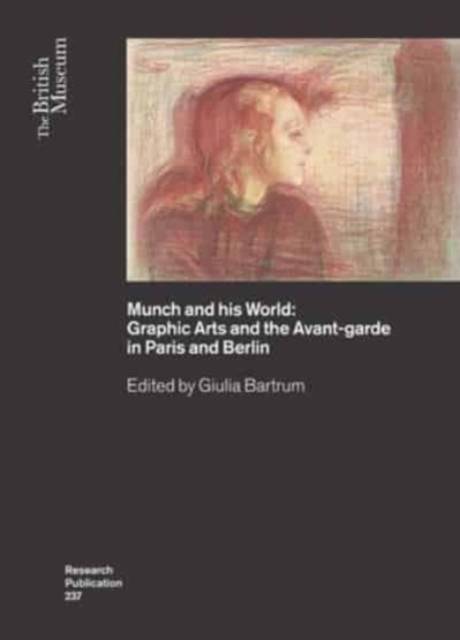
- Afhalen na 1 uur in een winkel met voorraad
- Gratis thuislevering in België vanaf € 30
- Ruim aanbod met 7 miljoen producten
- Afhalen na 1 uur in een winkel met voorraad
- Gratis thuislevering in België vanaf € 30
- Ruim aanbod met 7 miljoen producten
Zoeken
Munch and His World
Graphic Arts and the Avant-Garde in Paris and Berlin
€ 50,45
+ 100 punten
Omschrijving
The art of Edvard Munch is striking for the originality and universality of its themes, which cross moments in place and time. Yet he was very much an artist of the nineteenth century, and the focus of this publication is to show how especially in his prints and photographs Munch was enabled by technical advances developed by his contemporaries to create an entirely new visual language. Munch is probably best known for his desire to express emotions surrounding love, illness, and death. However, the authors in this volume show that this preoccupation was not only based on biographical events but reflects wider contemporary debates on developments in medicine and science, including treatment of mental illness, as well as a proliferation of technical expertise in the production of prints.
The arguments presented expand on subjects touched upon in the critically acclaimed British Museum exhibition 'Edvard Munch: love and angst' (2019). Munch's remarkable prints were fundamental to establishing his international career, but there remains much to investigate in connection with the background to his innovatory techniques, his relationship with contemporary printmakers and his experiments with photography. The authors in this volume go some way to address these themes and outline future avenues of research.
The arguments presented expand on subjects touched upon in the critically acclaimed British Museum exhibition 'Edvard Munch: love and angst' (2019). Munch's remarkable prints were fundamental to establishing his international career, but there remains much to investigate in connection with the background to his innovatory techniques, his relationship with contemporary printmakers and his experiments with photography. The authors in this volume go some way to address these themes and outline future avenues of research.
Specificaties
Betrokkenen
- Uitgeverij:
Inhoud
- Aantal bladzijden:
- 130
- Taal:
- Engels
- Reeks:
Eigenschappen
- Productcode (EAN):
- 9780861592371
- Verschijningsdatum:
- 29/07/2022
- Uitvoering:
- Paperback
- Formaat:
- Trade paperback (VS)
- Afmetingen:
- 208 mm x 297 mm
- Gewicht:
- 466 g

Alleen bij Standaard Boekhandel
+ 100 punten op je klantenkaart van Standaard Boekhandel
Beoordelingen
We publiceren alleen reviews die voldoen aan de voorwaarden voor reviews. Bekijk onze voorwaarden voor reviews.










